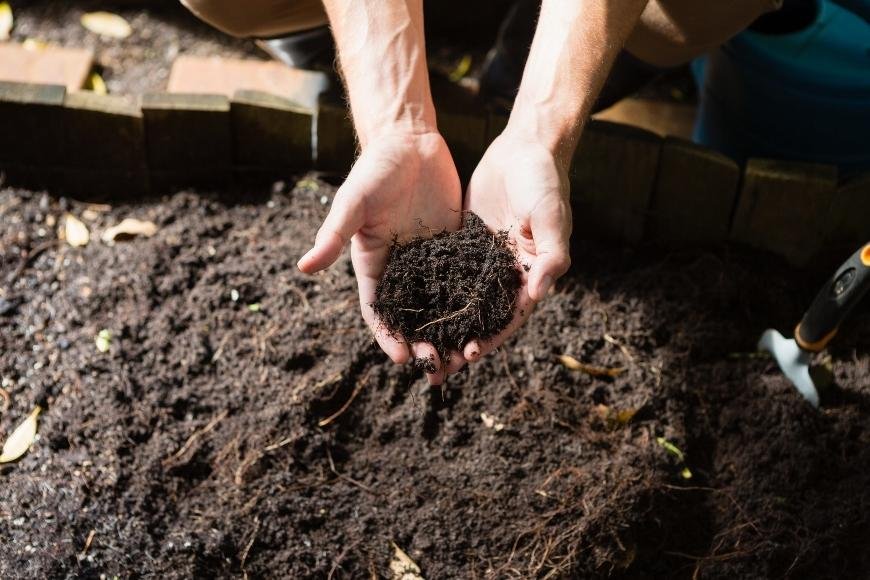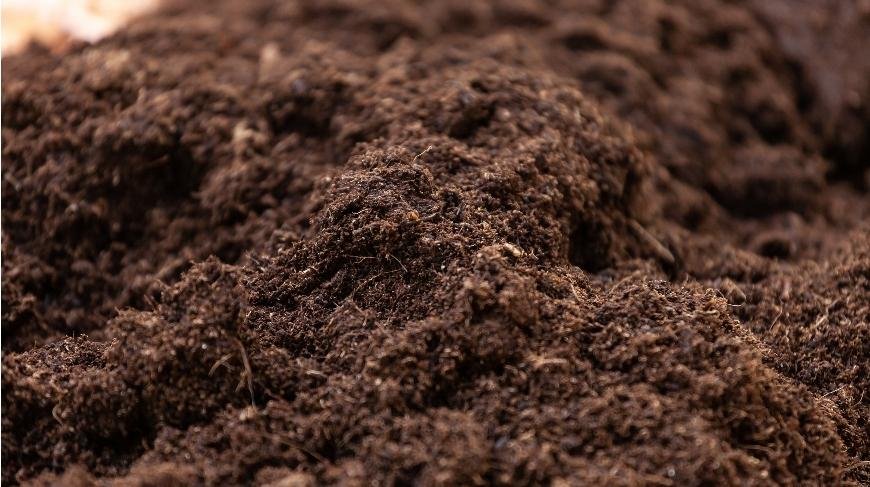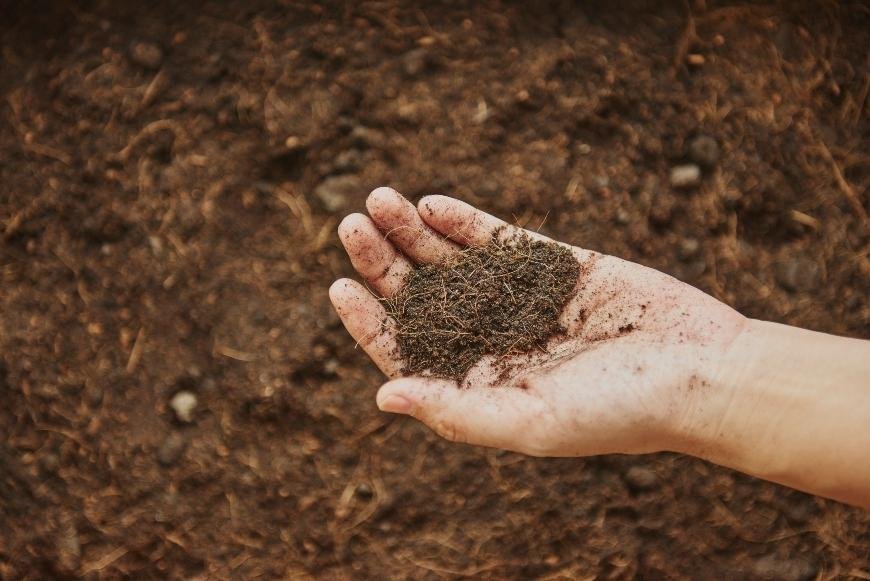Growing Cannabis in Soil
A complete guide to growing cannabis in soil, with tips for cultivating healthy plants, improving soil quality, and ensuring success.

Soil-based cultivation of cannabis offers many advantages, such as improved flavor, aroma and overall plant health; however, achieving the optimal soil environment can be a complex undertaking. However, understanding the intricacies of soil quality and its impact on cannabis cultivation can be a complex task. In this blog post, we will delve into the world of soil science to help you optimize your growing environment.
We'll begin by discussing how to assess and understand soil quality for cannabis cultivation before moving on to ways you can improve it. You'll also learn about measuring and adjusting pH levels in your soil mix to ensure optimal nutrient uptake by your plants.
Furthermore, we'll cover common soil-related problems encountered during indoor or outdoor cannabis cultivation and provide best practices for successfully growing healthy plants in various types of soils. By honing these strategies, you'll be well on your path to becoming a pro at cultivating cannabis in soil.
Table of Contents:
- Understanding Soil Quality for Cannabis Cultivation
- Improving Soil Quality for Cannabis Cultivation
- Measuring and Adjusting pH Levels in Soil
- Common Soil-Related Problems During Cannabis Cultivation
- Best Practices for Growing Cannabis in Soil
- FAQs in Relation to Growing Cannabis in Soil
- Conclusion
Understanding Soil Quality for Cannabis Cultivation
Soil quality is essential for successful cannabis cultivation. Picking the correct soil combination can have a huge effect on your plants' wellbeing and yield. Organic, nutrient-rich soil blends are ideal for growing healthy cannabis plants that produce high-quality yields.
When selecting a soil blend, factors such as water retention, drainage, texture and pH should be taken into account to ensure the best results. The best soils will retain moisture while also allowing excess water to drain away from the roots of your plants. Soils with coarse textures are better at promoting good drainage than those with finer textures because they allow air to circulate around plant roots more easily. Additionally, you should check the pH level of your soil before planting; most cannabis strains prefer slightly acidic soils between 6 and 7 on the pH scale.
In addition to choosing a suitable blend of organic material like compost or peat moss, you may want to add nutrients like nitrogen or phosphorus into your soil mix depending on what kind of cannabis strain you're cultivating. These elements help promote vigorous growth during flowering and increase yields significantly when used correctly. It's also important to use fertilizers that contain micronutrients like iron or magnesium which provide essential minerals for healthy plant development over time.
You should also be aware of common problems related to poor soil quality such as root rot caused by too much moisture or nutrient deficiencies due to inadequate amounts of fertilizer in the mix . If left unchecked these issues can lead to stunted growth or even death in some cases so it’s important not just pick any old dirt but carefully select an appropriate blend for optimal results . To ensure success , research different types available and ask experienced growers about their recommendations before purchasing anything .
Finally, remember that regular maintenance is key when growing in soil; this includes aerating regularly, adding amendments if needed, testing pH levels periodically and removing weeds promptly. With proper care, you will be able to harvest top shelf buds every season.
It is essential to recognize the caliber of soil when cultivating cannabis, as it can have a considerable influence on the eventual outcome and harvest of your plants. Improving this quality requires knowledge on how to optimize its composition for optimal growth.
Improving Soil Quality for Cannabis Cultivation
Soil excellence is a significant component to mull over when raising cannabis. Inadequate earth can bring about issues, for example, nutrient inadequacies, root decay and moderate development. Fortunately, there are strategies that can be implemented to optimize soil quality and consequently enhance the prospects of cannabis cultivation.
Adding amendments like perlite or vermiculite helps increase drainage and aeration in the soil. Perlite is made up of small particles that hold onto air and water while allowing excess moisture to drain away from the roots. Vermiculite contains minerals which help retain moisture in the soil while still allowing for proper drainage. Adding coco coir is another great way to improve drainage and aeration since it’s composed of fibrous material that holds onto nutrients but also allows oxygen into the mix.
Measuring pH levels in your soil is essential for optimal plant health since different species have varying preferences for acidity levels in their growing mediums. The ideal range for most cannabis strains lies between 6-7 on the pH scale; however, some varieties may prefer slightly higher or lower values depending on their genetics. If needed, adjust pH levels by adding lime (to raise) or sulfur (to lower). Be sure not to overdo it though - too much adjustment can be just as detrimental as not enough.
Common issues with soils include compaction, poor drainage, low organic matter content, high salinity levels, excessive amounts of clay/sand particles etc., all of which can affect plant growth negatively if left unchecked during cultivation processes. To avoid these issues try mixing composted manure into existing soils before planting or top-dressing around established plants every few weeks throughout their growing cycle; this will provide them with additional nutrition while improving structure & texture simultaneously. Additionally adding gypsum helps break down clay particles so they don't impede root development & water absorption capabilities within each cell wall layer surrounding them respectively.
Improving soil quality for cannabis cultivation is essential to ensure that your plants are healthy and can produce the best yields. To achieve this, it is important to measure and adjust pH levels in the soil accordingly.

Measuring and Adjusting pH Levels in Soil
The acidity of the earth is an indispensable part in cannabis growing, as it can have a major effect on the uptake of nutrients by plants and ultimately lead to crop failure if not kept track of. Soil pH can significantly impact the uptake of nutrients by plants, making it a critical factor in cultivating cannabis successfully; if not properly monitored, this could result in crop failure. To ensure optimal nutrient uptake by your plants, it’s essential to measure and adjust the pH levels in your soil.
Measuring pH levels is relatively easy with a simple test kit available from most gardening stores or online retailers. These kits usually contain litmus paper that you dip into water mixed with soil, which will then change color depending on the acidity level of your soil. The colors are compared against a chart included in the kit to determine whether your soil falls within an acceptable range for cannabis growth (6-7). If not, adjustments need to be made before planting begins.
Adjusting pH levels involves adding either acidic or alkaline materials such as sulfuric acid or lime powder respectively; both can be found at any garden center or hardware store. When applying these materials, use caution as they can cause skin irritation and should always be handled wearing protective gear like gloves and safety glasses. Start by adding small amounts until desired results are achieved; too much could create an overly acidic environment that would stunt plant growth instead of helping it along.
When adjusting soils for cannabis cultivation, it’s important to keep track of how much material has been added so future measurements will accurately reflect changes over time - especially since some amendments may require multiple applications before reaching desired results. Additionally, consider using organic matter like composted manure which helps maintain balanced pH levels naturally while providing beneficial nutrients for healthy root development.
Finally, don’t forget that different strains have different preferences when it comes to their ideal growing conditions - make sure you do research beforehand so you know what type of environment each strain needs in order to thrive. With proper monitoring and adjustments based on testing results plus appropriate amendments tailored specifically towards individual strains being grown, achieving optimum nutrient uptake becomes easier than ever.
It is important to understand the basics of measuring and adjusting pH levels in soil when cultivating cannabis, as this will help ensure optimal growth. Moving on, common soil-related problems during cannabis cultivation can be difficult to diagnose and fix if one does not have a good understanding of what factors may contribute to them.
Common Soil-Related Problems During Cannabis Cultivation
When growing cannabis, it is important to understand the potential soil-related problems that can arise. Poorly managed soils can lead to nutrient deficiencies and diseases in your plants, which can significantly reduce yields. Fortunately, there are a few common soil-related issues you should be aware of when cultivating cannabis.
Compaction is one of the most common soil-related problems encountered by growers. Compacted soils have fewer air pockets and less organic matter than non-compacted soils, resulting in poor drainage and root development. To prevent compaction from occurring, avoid walking on wet or muddy ground and use raised beds for planting if possible.
Nutrient deficiency is another issue that often plagues cannabis cultivators. Without sufficient amounts of nutrients like nitrogen, phosphorus, potassium, calcium and magnesium present in the soil, cannabis cultivators may experience nutrient deficiencies that can impede healthy growth. If your plants appear pallid or stunted despite regular watering and fertilization then they may be experiencing nutrient deficiencies due to an imbalance in their environment's pH levels or lack of essential minerals in the soil itself. To rectify this situation you should consider introducing additional fertilizers with balanced NPK ratios or tweaking your irrigation schedule to correct any imbalances before applying more fertilizer - too much fertilizer can also damage your plants roots over time if left unchecked.
Soil acidity is another problem experienced by many growers when attempting to cultivate cannabis successfully outdoors particularly those located at higher altitudes where naturally acidic conditions tend prevail due harsh environmental factors like high winds , low temperatures , dry air etc Soils with excessive acidity (pH below 7) will make it difficult for plant roots absorb vital nutrients required for proper growth so testing kits must be used regularly throughout cultivation process ensure optimal levels maintained . It's also recommended apply limestone help raise pH neutralize overly acidic environments but keep mind large quantities lime alter taste flavor buds flower harvest so don't go overboard .
Common soil-related problems during cannabis cultivation can be difficult to troubleshoot, but understanding the basics of how plants interact with their environment is key. With that knowledge in hand, we can now move on to discuss best practices for growing cannabis in soil.

Best Practices for Growing Cannabis in Soil
Soil is one of the most popular growing mediums for cannabis, and with good reason. Soil-grown cannabis can yield some of the highest returns, if done correctly. For maximum yield, it is important to keep in mind certain tips when growing cannabis with soil.
Watering:
Proper watering is essential when growing in soil. Overwatering can lead to root rot and other issues that will stunt growth or kill your plants altogether. Start by giving your plants enough water so that they stay moist but not soggy; this may require you to water more frequently during hot summer months than cooler winter ones. A moisture meter can help you determine if your soil needs additional hydration or not - just make sure to use it correctly.
Fertilizers:
Adding fertilizer helps ensure optimal growth and yield from your cannabis plants grown in soil. However, be careful not to over-fertilize as this could burn delicate roots and cause nutrient deficiencies in the plant’s foliage leading to stunted growth or even death of the plant itself. It's important to choose fertilizers designed specifically for cannabis so that you know exactly what nutrients are being added into the mix - organic fertilizers are also an option if desired.
pH Balance:
The pH level of your soil plays an important role in how well it supports healthy plant growth; too acidic or alkaline soils won't provide ideal conditions for optimal growth and yield potential from cannabis plants grown within them. Test kits are available at garden centers which allow you measure pH levels accurately; aim for a range between 6-7 (neutral) when possible though slightly higher levels up around 7-8 aren't necessarily bad either depending on strain type used etc
Aeration & Drainage:
Good aeration allows oxygenated air into the root zone while proper drainage ensures excess water doesn't become stagnant leading towards root rot/disease problems down the line as well as potentially drowning out beneficial microorganisms present within healthy soils like fungi etc Consider adding perlite or vermiculite into mixes prior planting time increase both aeration/drainage simultaneously while helping retain necessary moisture content overall too boot.
FAQs in Relation to Growing Cannabis in Soil
Is it better to grow cannabis in soil?
Growing cannabis in soil is generally considered the best option for cultivating a successful crop. Soil provides essential nutrients and minerals, as well as an ideal pH balance that helps plants thrive. Additionally, growing in soil allows for better aeration and drainage of excess water, helping to prevent root rot and other issues caused by overwatering. Overall, soil offers more control over the environment than hydroponic systems or other alternatives, making it a preferred choice among experienced growers.
Is it better to grow cannabis in soil or hydroponics?
Growing cannabis in soil is generally seen as the most traditional and cost-effective method. Soil offers a natural habitat for plants, granting them access to essential nutrients that hydroponics can't provide. Additionally, soil can help buffer pH levels which may be difficult to maintain when using hydroponic systems. However, it does require more effort than hydroponic growing since it needs frequent watering and fertilizing for optimal growth. Ultimately, the choice between soil or hydroponics depends on individual preferences and desired outcomes from their crop of cannabis.
Why grow cannabis in soil?
Growing cannabis in soil has several advantages over other methods. Soil provides an optimal habitat for vegetation to flourish, containing naturally-occurring nutrients and minerals. Additionally, soil can hold moisture better than hydroponic systems or artificial mediums, reducing the need for frequent watering. Growing in soil also allows for more control over the pH levels of your grow space; this is important as different strains may require slightly different conditions to reach their full potential. Finally, growing cannabis in soil helps protect against root diseases and pests that could damage your crop if left unchecked.
Conclusion
By understanding the quality of your soil, improving it with amendments, measuring and adjusting pH levels, and being aware of common problems that may arise during growing can help ensure a great harvest. Having the right information about cultivating cannabis in soil can get you started on your journey to becoming an expert grower.




















































































































